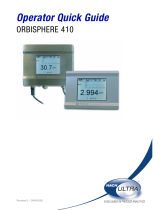
i
Table of Contents
1. General Description..............................................................................................................................1
2. Specifications........................................................................................................................................3
3. Quick Start.............................................................................................................................................5
4. Controls .................................................................................................................................................6
4.1 Front Panel...................................................................................................................................................... 6
4.2 Software Flow Chart ....................................................................................................................................... 7
4.3 Rear Panel....................................................................................................................................................... 9
5. Setup....................................................................................................................................................11
5.1 Display Setup................................................................................................................................................ 12
5.2 Report Setup ................................................................................................................................................. 14
5.3 Autostable Setup ........................................................................................................................................... 16
5.4 System Setup................................................................................................................................................. 17
6. Calibration ...........................................................................................................................................19
6.1 Dissolved Oxygen Calibration ...................................................................................................................... 19
Auto Cal........................................................................................................................................................ 20
DO Cal (manual)........................................................................................................................................... 21
Barometer ..................................................................................................................................................... 22
Salinity.......................................................................................................................................................... 23
6.2 Zero Calibration............................................................................................................................................ 24
7. Operation.............................................................................................................................................26
7.1 Main Mode ................................................................................................................................................... 26
Making Measurements.................................................................................................................................. 26
Store.............................................................................................................................................................. 27
Review.......................................................................................................................................................... 28
Send .............................................................................................................................................................. 30
7.2 Application Mode ......................................................................................................................................... 32
OUR.............................................................................................................................................................. 32
SOUR............................................................................................................................................................ 37
Remote.......................................................................................................................................................... 42
8. Diagnostics..........................................................................................................................................44
History .......................................................................................................................................................... 45
Sensor ........................................................................................................................................................... 46
Reset Ps......................................................................................................................................................... 47
9. Principles of Operation.......................................................................................................................48
10. Understanding Dissolved Oxygen Error Factors......................................................................49





















